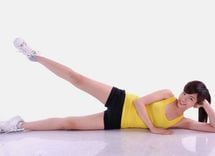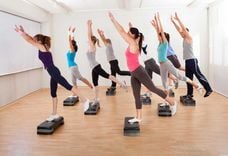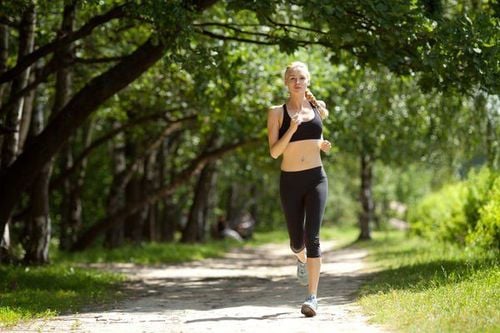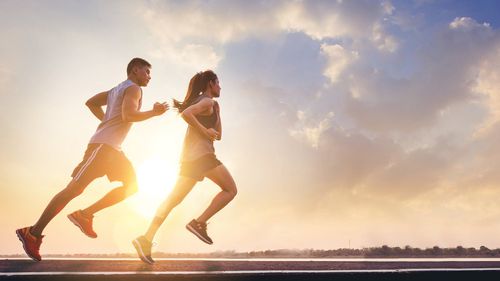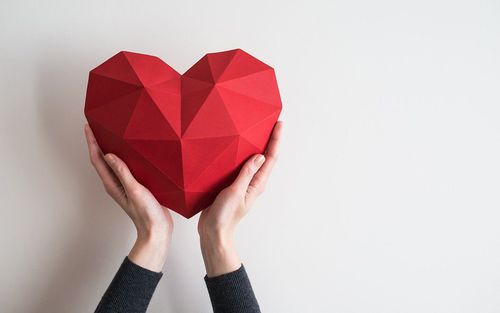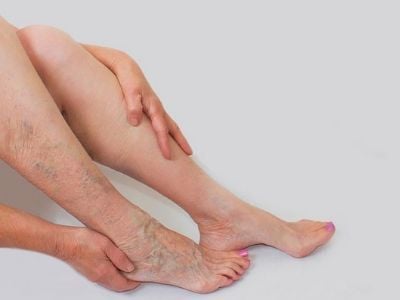This is an automatically translated article.
Running small steps in place is an on-site subject that is very useful for busy people who find it difficult to arrange time for outdoor sports practice. The technique of running small steps is not too complicated, so anyone can learn and practice easily.
1. What is small step running?
Running small steps in place is a form of running exercise. The difference is that when running normally, the practitioner will move with a wide stride, while running small steps is performed with short or very short steps (each step is only approximately 1/2 foot long). Running intensity of jogging and running small steps is the same.
The form of running small steps can be done at home, in any space such as bedroom, living room, balcony,... Running small steps in place is a great alternative for those who do not have time to practice outdoors or have not invested in a treadmill at home. This form helps to burn more calories and relax the body effectively.
2. The benefits of using the small-step running technique
The method of running small steps on the spot includes simple movements, easy to perform, and does not cost equipment investment. However, it brings a lot of benefits to the practitioner. That is:2.1 High degree of safety
If you run on roads with a lot of traffic or visibility, you can be in danger. However, if you run small steps at home, you can be trained in a completely safe environment. Experts often encourage practitioners to perform small steps on a treadmill with a smooth, high-friction carpet. From there, you can practice comfortably, without worrying about risks.2.2 Flexibility when arranging practice time
You can take advantage of jogging on the spot whenever you have time. In other words, choosing this exercise method helps the practitioner to take advantage of the free time in the day, avoiding waste.
2.3 Improve blood circulation
Running small steps in place stimulates blood vessels to work better, promotes the elasticity of capillaries, thereby supporting blood circulation to locations on the body. After running small steps, you will feel the body heat up, sweat a lot, blood circulation faster.
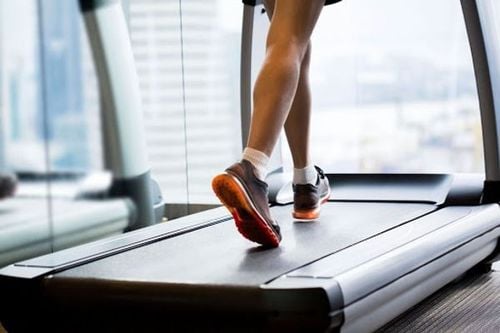
Chạy bước nhỏ giúp cải thiện tuần hoàn máu
2.4 Improve health and endurance
The form of running small steps does not require the practitioner to spend too much energy on practice. Therefore, this is a useful exercise method for people with osteoarthritis because it does not put much pressure on the legs. In addition, this technique also contributes to improving flexibility and endurance for the body.
3. Details of the small step running technique
Running small steps with correct technique will bring the highest efficiency to the practitioner. Some important notes include:
3.1 Posture
In running in general, running in particular, running posture is one of the very important factors. Posture greatly affects the performance and health of the practitioner. Accordingly, when running, you need to stand upright, the distance between your feet is shoulder-width apart, your eyes looking forward. This pose helps reduce pressure on the knees, you will run faster.
3.2 Running technique
Technique determines the effectiveness of running small steps. According to experts, when running with strong footsteps, touching the ground with the whole foot will negatively affect the shin bones, knees and back. So, when running small steps you should land with the tip of your toes (instead of the heel or the whole foot).
3.3 Breathing rate
In the process of running small steps, the practitioner should breathe through the mouth (instead of the nose) to improve endurance, limit dehydration because when dehydrated, the body will quickly feel tired. At the same time, if you exercise for a long time, you should replenish water regularly every 10 minutes.
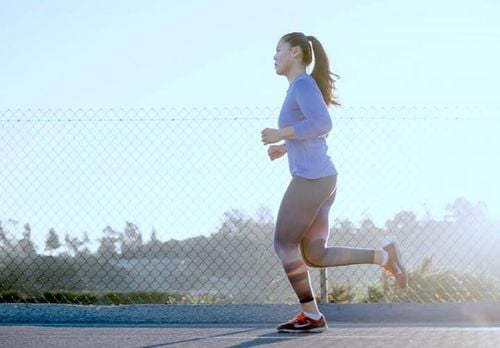
Người tập nên thở bằng miệng khi chạy bước nhỏ
3.4 Hand and foot movements
In the process of running small steps, you need to pay attention to combine hand strokes and foot beats in each step. Accordingly, you should swing your arms with each step to create rhythm. If you choose to run small steps for the purpose of losing weight, you need to pay special attention to the coordination of hand-foot movements.
3.5 Some important notes when running small steps
To achieve the best training effect, you need to pay attention to the following:
Choose comfortable, suitable clothes with good sweat absorption to create a cool feeling when practicing. Besides, you should choose a pair of shoes that fit your feet and are smooth to avoid sports injuries; Warm-up thoroughly before each running session to increase blood circulation, warm up muscle groups, help the body move flexibly, get used to the intensity of exercise. You should spend 5-10 minutes to warm up with movements such as raising thighs, stretching muscles, ... before starting the training session; You need to replenish water regularly during the running session by drinking small sips every 7-10 minutes to replace the lost body water. This will help you run longer, with less fatigue; For the training process to be effective, you should build a reasonable running schedule based on your living and work habits. You need to ensure a reasonable running frequency is 3-5 sessions/week, 20-30 minutes/session. Running small steps is a fairly simple form of exercise but has many health benefits. Master the technique of running small steps above to improve your health and improve your physique.
Please dial HOTLINE for more information or register for an appointment HERE. Download MyVinmec app to make appointments faster and to manage your bookings easily.
